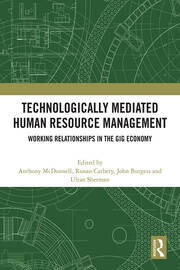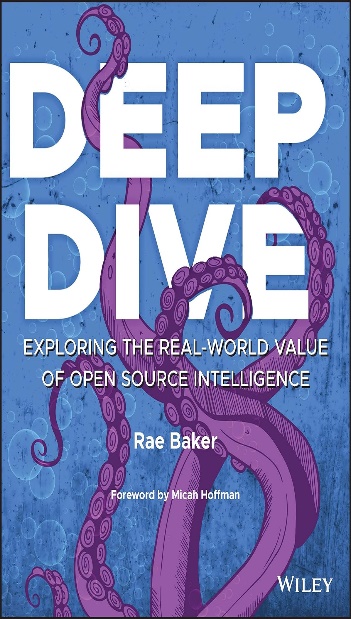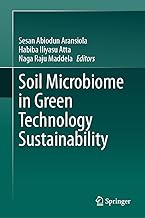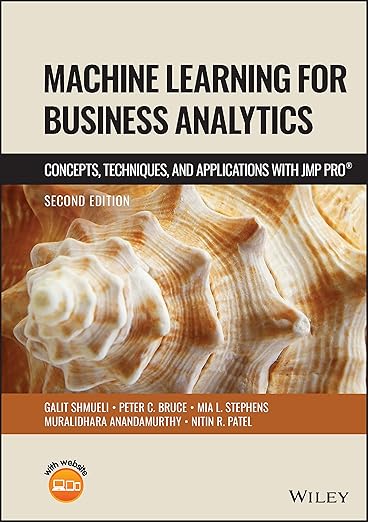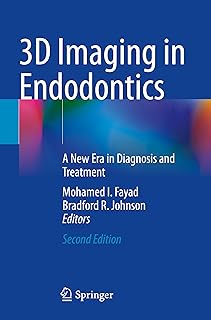
Book
Agri 4.0 and the Future of Cyber-Physical Agricultural Systems
ISBN : 9780443131851
Author : Seifedine Kadry
Publisher : elsevier
Year : 2024
Language : Thai
Type : Book
Description : Cover image Title page Table of Contents Copyright List of contributors About the editors Preface Acknowledgments Chapter 1. Journey to cyber-physical agricultural systems digitalization and technological evolution Abstract 1.1 Introduction of agricultural cyber-physical system 1.2 Digitalization 1.3 Technological evolution 1.4 Internet of Things 1.5 Digital farming 1.6 Artificial intelligence and machine learning 1.7 Applications of cyber-physical agricultural systems 1.8 More about agricultural cyber-physical system 1.9 Tools 1.10 Cyber-physical farming platform 1.11 Real-time modeling, sensing, and optimization for data-driven decision-making 1.12 Crop productivity and soil nutrient analysis 1.13 Simulated case study and validation of theory 1.14 Potential paths for future studies 1.15 Future scope 1.16 Apps 1.17 Conclusion Acknowledgment References Further reading Chapter 2. Agricultural cyber-physical systems: evolution, basic, and fundamental concepts Abstract 2.1 Introduction 2.2 What is machine learning 2.3 Machine learning–based cyber-physical system 2.4 Smart grids 2.5 Reinforcement learning–based cyber-physical system 2.6 Integration of machine learning–based deep learning 2.7 Machine learning–based cyber-physical system detection rate 2.8 Techniques for machine learning 2.9 Some technological issues 2.10 Conclusion References Chapter 3. Tools and framework for cyber-physical agricultural systems Abstract 3.1 Introduction 3.2 Sensors for cyber-physical agricultural system 3.3 Communication protocols for cyber-physical agricultural system 3.4 Decision support systems for cyber-physical agricultural system 3.5 Machine learning and artificial intelligence for cyber-physical agricultural system 3.6 Case studies of cyber-physical agricultural system implementation 3.7 Conclusion References Chapter 4. Convergence of Internet of things, machine learning, blockchain, big data, cloud, 5G for building the ecosystem for cyber-physical agricultural systems Abstract 4.1 Introduction 4.2 Blockchain in agriculture 4.3 5G in agriculture 4.4 Internet of things in agriculture 4.5 Cloud computing in agriculture 4.6 Machine learning and big data in agriculture 4.7 Summary References Chapter 5. Issues and research challenges for implementing cyber-physical agricultural supply chains Abstract 5.1 Introduction 5.2 Different technologies in Agri 4.0 5.3 The effects of Internet of things on supply chain 5.4 Application of agricultural Internet of things 5.5 Cyber-physical system 5.6 Conclusion References Chapter 6. Economic, social, and environmental challenges in Agri 4.0 Abstract 6.1 Introduction 6.2 Problem statement 6.3 Related work 6.4 Some general findings from the literature review 6.5 Objective of study 6.6 Methods applied to study 6.7 World Trade Organization 6.8 Dimensions of India’s agricultural exports 6.9 Agricultural export zone 6.10 Conclusion 6.11 Guidelines consequences Abbreviation References Chapter 7. Smart multilayer architecture for cyber-physical agricultural systems with Intel oneAPI Abstract 7.1 Introduction 7.2 Motivation 7.3 Problem statement 7.4 Intel oneAPI—a software stack for all domains, explored for agriculture 7.5 Proposed architecture and technicalities 7.6 Results and observations 7.7 Conclusion References Chapter 8. Blockchain-based smart supply chain and transportation for Agri 4.0 Abstract 8.1 Introduction 8.2 Literature survey 8.3 Methodology 8.4 Experiments and performance analysis 8.5 Conclusion References Chapter 9. Toward precision agriculture in Cyber-Physical Agricultural System Abstract 9.1 Introduction 9.2 Benefits of cyber-physical system 9.3 Challenges faced by cyber-physical system 9.4 Model of Agriculture 4.0 9.5 Aspects of Agriculture 4.0 and its applications 9.6 Challenges in Agriculture 4.0 9.7 Developments in Agriculture 4.0 9.8 Use cases of cyber-physical agricultural system 9.9 Conclusion References Chapter 10. Fully convolutional network for edge devices—FPGA implementation and analysis for agriculture technology Abstract 10.1 Introduction 10.2 Background 10.3 Network structure and MATLAB implementation—convolutional neural network and fully convolutional network 10.4 Hardware architecture—FPGA implementation and validation—convolutional neural network and fully convolutional network 10.5 Hardware validation—results and analysis 10.6 Conclusion Acknowledgment Data availability statement References Chapter 11. Smart production monitoring using drones in cyber-physical agricultural systems Abstract 11.1 Introduction 11.2 Historical timeline of drones 11.3 Literature review 11.4 Flowchart of decision-making algorithm 11.5 Drone architecture 11.6 Working principle of drone 11.7 Working process of drone 11.8 Hardware work process 11.9 Software/logical working of drone 11.10 Application areas/potential sectors of drone technology 11.11 Cyber-physical agriculture system in agriculture 11.12 Revolution in agriculture or Agri 4.0 11.13 Application of drones in smart production 11.14 Implementation of drone in smart production and farming 11.15 Key points of drone employed in agriculture 11.16 Conclusion References Further reading Chapter 12. Role of recent innovations in smart agriculture systems Abstract 12.1 Introduction 12.2 Conceptual framework of climate-smart agriculture and climate-smart village 12.3 Field-based evidence from India on the agronomic, financial, and environmental benefits 12.4 Use of cyber-physical system in smart agriculture 12.5 Use of Internet of things in smart farming 12.6 Use of blockchain in smart agriculture 12.7 Use of drones in smart agriculture 12.8 Role of smart technology in agricultural governance 12.9 Conclusion References Chapter 13. AI-based pest detection and recovery model for cyber-physical agricultural systems Abstract 13.1 Introduction to the fruit detector challenges 13.2 Review and analysis of an experimental study 13.3 Methodology of the proposed work 13.4 Requirements for Architecture and Software 13.5 Results 13.6 Summary References Chapter 14. Automated diagnosis of disease in grape leaves using deep neural networks Abstract 14.1 Introduction 14.2 Related work 14.3 Proposed model 14.4 GLCM 14.5 Pseudo-code for GLCM 14.6 K-means Clustering 14.7 Pseudo-code for K-means clustering algorithm 14.8 Reading the input leaf image 14.9 K-means on image compression 14.10 Multisupport vector machine 14.11 Pseudo-code for multisupport vector machine 14.12 Results and discussions 14.13 Conclusion References Chapter 15. Automated crop cultivation and pesticide scheduling: a case study Abstract 15.1 Introduction 15.2 Artificial intelligence 15.3 Automated crop cultivation 15.4 Case studies 15.5 Implementation challenges 15.6 Percentage of respondents 15.7 Conclusion and future prospects References Index


